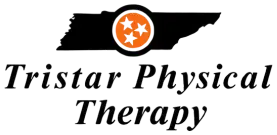Physical therapy is a crucial part of the recovery process for many individuals. The goal of physical therapy is to help patients regain strength, mobility, and flexibility after an injury or surgery. Dry needling is a relatively new technique that has been gaining popularity in the physical therapy world. This technique involves the insertion of needles into specific trigger points to relieve pain and improve muscle function. In this article, we will explore the power of dry needling in physical therapy and how it can help accelerate your rehabilitation progress.
The Power of Dry Needling in Physical Therapy
Dry needling is a technique that is used to treat a variety of musculoskeletal conditions. This technique involves the insertion of needles into specific trigger points in the muscle. The needle is inserted into the trigger point, causing a twitch response. This twitch response helps to release tension in the muscle and relieve pain.
Dry needling is often used in conjunction with other physical therapy techniques to help patients achieve maximum results. It is particularly effective in treating conditions such as chronic pain, muscle spasms, and tension headaches. The technique can also be used to treat sports injuries, such as tennis elbow and runner’s knee.
One of the greatest benefits of dry needling is that it provides immediate relief for many patients. It is also a minimally invasive procedure, which means that there is little to no downtime. Patients can often return to their normal activities immediately after the procedure.
Accelerate Your Rehabilitation with Dry Needling
If you are participating in physical therapy, dry needling can help accelerate your rehabilitation progress. The technique can help improve muscle function, reduce pain and inflammation, and increase range of motion. This can help you achieve faster results and get back to your normal activities sooner.
Dry needling is often used in conjunction with other physical therapy techniques, such as exercise and manual therapy. This combination of techniques can help address the root cause of your condition and provide long-term relief.
It is important to note that dry needling is not the right choice for everyone. Your physical therapist will evaluate your individual needs and determine if dry needling is a good option for you.
Dry needling is a powerful technique that can help accelerate your rehabilitation progress. If you are struggling with chronic pain or muscle tension, consider asking your physical therapist about dry needling. With the help of a skilled physical therapist, you can achieve faster results and get back to doing the things you love.

